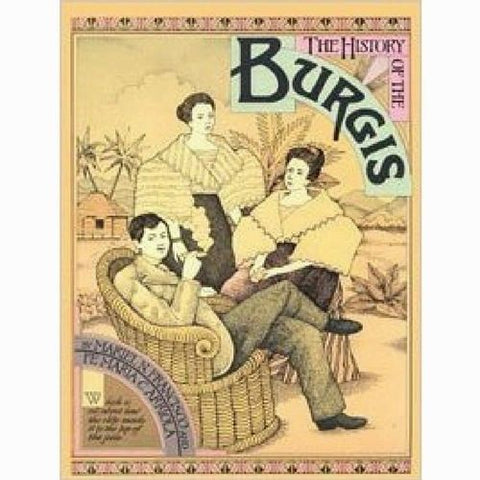
History of the Burgis by Mariel N. Francisco (Out of Print)
Regular price
$200.00
Shipping calculated at checkout.
Share this Product
Out of print title
By Mariel N. Francisco and Fe Maria C. ArriolaHow to read this book:
fully illustrated; gives a clear understanding of being Filipino
Think of it as a bus tour through five hundred years of Philippine history. Our tour guide is a dedicated and endearing school teacher (Mariel N. Francisco) who helpfully points out the high and low points, the twists and turns of the Filipino nation's "continuing past" in her capsulized historical narrative. The reader must pay attention to this narrative - for our tip guide does not only set the pace. she also holds the itinerary. She sits out front (the upper half of the page) and her well modulated loudspeaker can be heard throughout the bus.
The back of the bus (the lower half of the page) is recommended for those whose attention span is short and/or who appreciate a bit more explanation. Here sits a wry observer (Fe C. Arriola) who provides short commentaries to the narrative. To prick her pompous balloon are three wiseacres (Onib Olmedo, Manny Arriola, Odette Alcantara) who make irrepressible comments on the comments. These sub-comments are for those who don't mind laughing until it hurts and who can see the point of being beside the point. Serious-minded, no-nonsense readers may ignore the sayings, wisecracks and asides.
Readers may even snub the disarming mascots provided for each period- the sassy lapulapu of the Spanish period, the high-flying eagle of the American period, the backward garden snail of the Japanese period, and the "trying hard" puppy of contemporary times. But they will do so at their own risk.
All over, various artists (Nik Rocio, Onib Olmedo, Tence Ruiz, Willie Aquino, Jess Abrera, Danny Dalena, Zny Laygo, Anna Fer,F rey Cabading, among others) seek to interpret that which words cannot express. Readers who are more intuitive than logical can take their cue from the drawings. Or from the old woman whose bayong full of old photographs, antique cigarette wrappers, clippings of forgotten cartoons and other material evidences of history spill all over the pages. To fellow ratpackers, these, by themselves, already make the tour.
No tour is complete without a conductor. The conductor here is an opinionated graduate student (Fe C. Arriola again) who insists on explaining at length (via the short, special boxed articles) why the road is bumpy, why there are delays in our goals, why some roads are well trodden and some overgrown with weeds, why there is sometimes a dilemma on which road to take. Readers who are politically-inclined and seriously interested in mapping a better country to tour should pay attention to the boxes. And so the reader has a choice of guides, seat to take, and seatmate.
While the book is written for the burgis, one does not have to be burgis to enjoy it. It is more important to know how to travel light, leaving behind the mental baggage that often weighs down both burgis and non-burgis. Take along instead an open mind, the grace to laugh at yourself, and the stubbornness to keep faith with fellow Filipinos.
A Philippine import.
Unknown Binding: 200 pages
Publisher: Bookmark; 1st edition (1987)
ISBN-10: 971914676-1
ISBN-13: 978-97-1-914676-6


